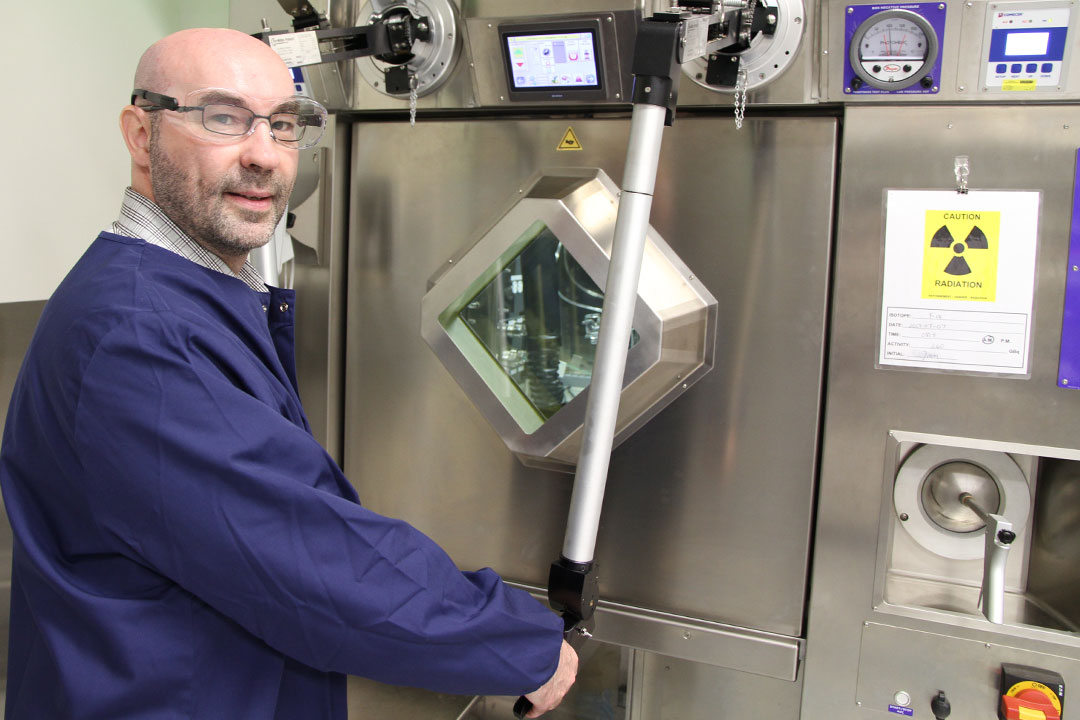
Cyclotron helps reduce wait times for patients
A year ago, Royal University Hospital (RUH) patients scheduled for medical scans to detect cancer cells sometimes waited as long as seven weeks.
By University CommunicationsToday, with radioisotopes being produced locally at the Saskatchewan Centre for Cyclotron Sciences at the U of S since June of last year, wait times on average have been reduced to as little as one week. Saskatchewan Premier Brad Wall made the announcement during a visit to the facility on July 10.
For some, that reduction in wait time can remove an unbearable stress from their shoulders much earlier than would otherwise be possible. For others, it can mean a welcome boost in a dire fight for survival.
“The sooner you can find out about cancer the better you can treat it and the better chance you have to save the patient’s life,” said Ghislain Boudreault, facility manager for the Saskatchewan Centre for Cyclotron Sciences. “That’s what makes the whole thing relevant. Cancer is always a matter of time. If you detect it too late, the patient will die. But if you can detect it very, very early, now you have a more hopeful chance to save the patient’s life.
The Saskatchewan Centre for Cyclotron Sciences, operated by the Sylvia Fedoruk Canadian Centre for Nuclear Innovation, has been the primary producer of radiopharmaceuticals to RUH since June of last year, drastically reducing the distance between use and production compared to their previous out-of-province supplier of radioisotopes. Given the shelf life of radiopharmaceuticals, said Boudreault, that difference can be critical.
“Radiopharmaceuticals are radioactive compounds, so they decay over time,” he said. “You cannot produce them, store them and then use them in two weeks. If you need it today, you’re producing it today, because by the end of the day there’s nothing left.”
If you need it today, you’re producing it today, because by the end of the day there’s nothing left.”
Read the full article on the University of Saskatchewan website.
